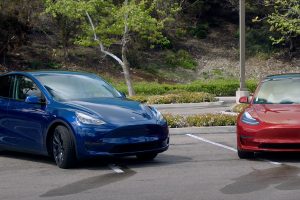- 💰 Fisker lost opportunity for a $150 million bailout from a larger automaker.
- 📉 Company’s stock price plummeted, halting trading and initiating delisting procedures.
- 🤝 Talks with the potential bailout partner fell through, prompting Fisker to explore other strategic options.
- 📉 Share prices dropped by 29 percent, potentially leading to NYSE delisting.
- 💼 Inevitable bankruptcy looms, according to Great Hill Capital chairman.
- 🔄 Proposal for a reverse stock split to boost share prices is under consideration.
- 📉 Fisker previously announced layoffs and delayed financial filings amidst financial struggles.
In the fast-paced world of electric vehicle (EV) manufacturing, Fisker has recently found itself at a critical juncture, grappling with financial setbacks and strategic uncertainties. Let’s delve into the key developments that have unfolded, and explore the implications for the company’s future.
A Missed Lifeline: The Failed Bailout and Stock Plunge
Fisker’s hopes for a much-needed financial lifeline were dashed when a potential $150 million bailout deal with a larger automaker fell through. This setback comes at a time when the company is facing mounting financial pressures. The abrupt halt in negotiations not only underscores the challenges Fisker is facing but also raises questions about its ability to weather the storm.
The consequences of this missed opportunity were immediately felt in the stock market. Fisker’s stock price plummeted, triggering a halt in trading and initiating delisting procedures. Such a sharp decline reflects investor concerns about the company’s financial health and its ability to sustain operations in the long run.
Strategic Crossroads: Exploring Options Amidst Uncertainty
With the bailout deal off the table, Fisker finds itself at a critical juncture, compelled to explore alternative strategic options. Talks with the potential bailout partner may have faltered, but the company is not giving up without a fight. Fisker is now actively considering in- or out-of-court restructuring, as well as capital market transactions, in a bid to shore up its finances and chart a path forward.
However, the road ahead is fraught with challenges. Fisker’s share prices have plummeted by 29 percent, raising the specter of NYSE delisting. The looming threat of bankruptcy, as warned by Great Hill Capital chairman Thomas Hayes, casts a shadow of uncertainty over the company’s future.
Reverse Stock Split: A Band-Aid Solution?
In a bid to stave off the specter of delisting and bolster investor confidence, Fisker has proposed a reverse stock split. This financial maneuver aims to boost share prices by reducing the number of shares each investor holds. While such a move may offer a temporary reprieve, it does not address the underlying issues plaguing the company.
Navigating Choppy Waters: Lessons for EV Startups
Fisker’s financial woes serve as a cautionary tale for aspiring EV startups navigating the competitive landscape. The rapid pace of innovation and shifting market dynamics demand resilience, adaptability, and prudent financial management. While the allure of disruptive technologies may be enticing, sustainable success hinges on a solid foundation of financial stability and strategic foresight.
In conclusion, Fisker’s recent travails underscore the harsh realities of the EV industry and the imperative for companies to navigate choppy waters with caution and agility. As the company charts its course forward, the lessons learned from this turbulent period will undoubtedly shape its trajectory in the years to come.





